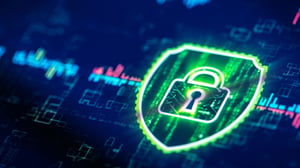
ISO IEC 27002: Essential Security Controls for AI Systems
Explore ISO/IEC 27002 for Artificial Intelligence.
Protect your AI systems with ISO/IEC 27002 security controls. Our comprehensive guide helps you implement effective measures for data and model protection.
ISO/IEC 27002 provides essential guidance for selecting, implementing, and managing information security controls within an Information Security Management System (ISMS). This international standard offers detailed best practice recommendations for protecting organizational information assets, helping businesses establish robust cybersecurity frameworks and achieve compliance with information security requirements.
Understanding ISO/IEC 27002: Purpose and Scope
In today's digital landscape, organizations face unprecedented information security challenges from sophisticated cyber threats, data breaches, and evolving regulatory requirements. ISO/IEC 27002 serves as the definitive guide for implementing effective information security management practices, providing organizations with comprehensive frameworks to protect their most valuable digital assets.
The revised ISO 27002:2022 standard represents a significant evolution from its predecessor, addressing modern cybersecurity concepts and emerging threat vectors. This standard bridges the gap between high-level security policies and practical implementation, offering detailed guidance that transforms theoretical security principles into actionable controls.
Developed by ISO/IEC JTC 1/SC 27, the information security subcommittee, this standard builds upon decades of cybersecurity expertise and industry best practices. It serves as the foundation for countless organizations worldwide seeking to establish mature information security management capabilities.
Overview of ISO/IEC 27002 and Its Evolution

Historical Context and Development
ISO/IEC 27002 evolved from ISO/IEC 17799, originally published as BS 7799-1 by the British Standards Institution. This evolution reflects the standard's continuous adaptation to emerging cybersecurity threats and technological advances.
The ISO/IEC 27002:2022 revision represents the most significant update since ISO/IEC 27002:2013, introducing new control categories and streamlining existing recommendations to address current information security risks more effectively.
Relationship with ISO/IEC 27001
While ISO/IEC 27001 provides the requirements for establishing an Information Security Management System, ISO/IEC 27002 serves as the implementation guide. This complementary relationship ensures organizations have both the framework (27001) and the detailed guidance (27002) necessary for effective information security management.
The standard directly supports ISO/IEC 27001 certification processes by providing detailed implementation guidance for each control area, making it an essential resource for organizations pursuing formal certification.
Key Components and Security Control Categories
Comprehensive Security Domains
ISO/IEC 27002 organizes security controls into 18 domains, each addressing specific aspects of information security properties. These domains provide comprehensive coverage of modern cybersecurity requirements:
Organizational Controls
- Information security policies and procedures
- Human resources security frameworks
- Asset management and classification
- Supplier relationship security
People Controls
- Access control mechanisms and privacy protection controls
- Cryptography implementation guidelines
- Physical security perimeters and environmental controls
- Operations security including web filtering and monitoring
Technological Controls
- Network security controls including cloud services protection
- Application and development security
- System acquisition and maintenance
- Information security incident management
Enhanced Control Framework
The revised ISO 27002:2022 standard introduces several new control areas reflecting contemporary cybersecurity needs:
- Data leakage prevention mechanisms
- Data masking techniques for sensitive information
- Enhanced cloud services security controls
- Advanced threat detection and response capabilities
These additions ensure the standard remains relevant to modern cybersecurity framework requirements and emerging threat landscapes.
Detailed Exploration of Critical Security Domains
Access Control and Identity Management
Access control represents one of the most critical security domains within ISO/IEC 27002. This domain addresses:
- User access provisioning and deprovisioning
- Privileged access management
- Multi-factor authentication requirements
- Regular access reviews and certifications
Effective access control implementation significantly reduces information security risks by ensuring only authorized individuals can access sensitive information and systems.
Cryptography and Data Protection
The cryptography domain provides comprehensive guidance for protecting information confidentiality, integrity, and authenticity. Key areas include:
- Cryptographic key management
- Encryption standards and implementation
- Digital signature requirements
- Secure communication protocols
These controls are essential for organizations handling sensitive data and requiring strong privacy protection controls.
Information Security Incident Management
This domain establishes frameworks for detecting, responding to, and recovering from security incidents. It encompasses:
- Incident detection and reporting procedures
- Response team roles and responsibilities
- Evidence collection and forensic analysis
- Lessons learned and improvement processes
Effective incident management minimizes the impact of data breaches and ensures rapid recovery from security events.
Updates in the 2022 Revision
New Control Recommendations
The ISO/IEC 27002:2022 revision introduces several new controls addressing contemporary cybersecurity challenges:
- Threat intelligence gathering and analysis
- Data loss prevention technologies
- Enhanced cloud services security requirements
- Advanced persistent threat detection capabilities
Streamlining Existing Controls
The revision consolidates and streamlines existing controls, reducing the total number from 114 to 93 while improving clarity and implementation guidance. This simplification makes the standard more accessible to organizations of all sizes.
Alignment with Current Cybersecurity Threats
The updated standard specifically addresses emerging threats including:
- Advanced persistent threats (APTs)
- Supply chain attacks
- Cloud services vulnerabilities
- IoT security challenges
This alignment ensures organizations implementing the standard are protected against contemporary threat vectors.
Benefits of Implementing ISO/IEC 27002
Risk Management Advantages
Organizations implementing ISO/IEC 27002 gain significant information risk treatment strategy benefits:
- Systematic identification of information security risks
- Structured approach to risk assessment and treatment
- Continuous monitoring and improvement capabilities
- Evidence-based decision making for security investments
Improved Data Asset Protection
The standard provides comprehensive frameworks for protecting organizational data assets:
- Classification and handling procedures for sensitive information
- Access controls based on business needs and risk assessments
- Encryption and data protection mechanisms
- Backup and recovery procedures ensuring business continuity
Alignment with International Best Practices
ISO/IEC 27002 represents global consensus on information security management best practices. Implementation ensures organizations align with internationally recognized security standards and best practice recommendations.
This alignment provides competitive advantages in markets requiring demonstrated security maturity and facilitates international business relationships.
Supporting the ISO/IEC 27001 Certification Process
Role of ISO/IEC 27002 in Certification
ISO/IEC 27002 plays a crucial role in ISO/IEC 27001 certification by providing detailed implementation guidance for required controls. Organizations pursuing certification rely on this standard for:
- Control selection based on risk assessments
- Implementation guidance for chosen controls
- Evidence preparation for certification audits
- Continuous improvement frameworks
Detailed Guidance for Risk Management
The standard provides comprehensive guidance for developing effective information risk treatment strategy approaches:
- Risk identification methodologies
- Control selection criteria
- Implementation planning frameworks
- Monitoring and review procedures
This guidance ensures organizations develop mature risk management capabilities aligned with ISMS system requirements.
Training and Professional Development
Certified Courses and Accreditation
ISO/IEC 27002 training programs provide professionals with essential skills for implementing and managing information security controls. These programs typically cover:
- Standard interpretation and application
- Control implementation methodologies
- Risk assessment techniques
- Audit and compliance procedures
Professional certification in ISO/IEC 27002 demonstrates competency in current information security practices and enhances career prospects in cybersecurity and compliance fields.
Developing Implementation Skills
Effective ISO/IEC 27002 implementation requires diverse skills including:
- Technical security expertise
- Risk management capabilities
- Project management skills
- Business process understanding
Organizations investing in comprehensive training programs achieve more successful implementations and sustainable security improvements.
Implementation Challenges and Solutions

Common Implementation Obstacles
Organizations frequently encounter challenges when implementing ISO/IEC 27002:
- Resource constraints limiting implementation scope
- Lack of executive support for security initiatives
- Technical complexity of certain controls
- Integration difficulties with existing systems and processes
Strategies for Overcoming Challenges
Successful implementation requires structured approaches addressing common obstacles:
Phased Implementation:
- Prioritize controls based on risk assessments
- Implement high-impact controls first
- Gradually expand scope over time
Executive Engagement
- Demonstrate business value of security investments
- Align security initiatives with business objectives
- Provide regular progress reports and success metrics
Technical Support
- Engage qualified security professionals
- Leverage automation tools where appropriate
- Establish partnerships with security vendors
Future Trends and Considerations
Evolving Cybersecurity Landscape
The cybersecurity landscape continues evolving rapidly, with emerging trends including:
- Artificial intelligence and machine learning in security
- Zero trust architecture principles
- Extended detection and response (XDR) platforms
- Privacy-enhancing technologies
Future revisions of ISO/IEC 27002 will likely address these trends and their security implications.
Anticipated Developments in Standards
The standardization community continues developing new guidance addressing emerging technologies and threats. Organizations should monitor developments in:
- Cloud services security standards
- IoT security frameworks
- Artificial intelligence security guidelines
- Privacy protection requirements
These developments will influence future versions of ISO/IEC 27002 and related security standards.
Industry-Specific Applications
Healthcare Information Security
Health information security represents a critical application area for ISO/IEC 27002. Healthcare organizations face unique challenges including:
- Patient privacy protection requirements
- Medical device security concerns
- Regulatory compliance obligations
- Clinical workflow integration needs
The standard provides frameworks addressing these healthcare-specific information security challenges.
Financial Services Implementation
Financial services organizations utilize ISO/IEC 27002 to address sector-specific requirements including:
- Data breach prevention and response
- Regulatory compliance with financial regulations
- Customer data protection
- Fraud prevention and detection
Industry-specific implementation guidelines help organizations tailor controls to their unique operating environments and regulatory requirements.
Frequently Asked Questions
What is the difference between ISO 27002, ISO 27000 and ISO 27001?
ISO 27000 provides the overview and vocabulary for the information security management family of standards. ISO 27001 specifies requirements for establishing an Information Security Management System (ISMS), while ISO/IEC 27002 provides detailed implementation guidance for security controls. Think of 27000 as the introduction, 27001 as the requirements, and 27002 as the implementation guide.
Is ISO 27002 mandatory?
ISO/IEC 27002 is not mandatory by law, but it serves as the primary guidance document for implementing ISO 27001 controls. Organizations pursuing ISO 27001 certification typically use 27002 as their implementation guide. Some regulatory frameworks reference these standards, making them effectively mandatory for certain industries or contracts.
How does it affect your (re)certification?
The revised ISO 27002:2022 standard introduces new controls and reorganizes existing ones. Organizations with ISO 27001 certification should review their current control implementations against the updated guidance. While existing certifications remain valid, organizations should consider incorporating new controls during their next recertification cycle to maintain optimal security posture.
What has changed in ISO 27002:2022?
ISO/IEC 27002:2022 includes significant changes: the number of controls reduced from 114 to 93 through consolidation, new controls address cloud services, data leakage prevention, and threat intelligence. The standard reorganized controls into four themes (Organizational, People, Physical, and Technological) and enhanced guidance for modern cybersecurity challenges including remote work and digital transformation.
Implementing Excellence in Information Security Management
ISO/IEC 27002 provides the definitive framework for implementing comprehensive information security management controls that protect organizational assets and support business objectives. By following this standard's best practice recommendations, organizations establish robust cybersecurity frameworks that address contemporary threats while supporting sustainable business growth.
The revised ISO 27002:2022 standard offers enhanced guidance reflecting current cybersecurity concepts and emerging threat landscapes. Organizations implementing these controls gain significant competitive advantages through improved security posture, regulatory compliance, and stakeholder confidence.
To begin your ISO/IEC 27002 implementation journey:
- Conduct a gap analysis against current information security management practices
- Develop an implementation roadmap prioritizing high-risk areas
- Establish governance structures supporting ongoing security improvement
- Invest in professional training to build internal capabilities
- Engage experienced consultants to accelerate implementation and ensure best practices
Our team at Nemko provides comprehensive support for ISO/IEC 27002 implementation, combining deep technical expertise with practical implementation experience. We help organizations develop digital trust through robust information security frameworks aligned with international best practices.
Ready to strengthen your information security posture? Contact us today to discuss your specific requirements and develop a customized implementation strategy that aligns with your organizational objectives and risk profile. Let us help you transform information security from a compliance requirement into a strategic business advantage.
Lorem ipsum dolor sit amet
Lorem Ipsum Dolor Sit Amet
Lorem ipsum odor amet, consectetuer adipiscing elit. Elementum condimentum lectus potenti eu duis magna natoque. Vivamus taciti dictumst habitasse egestas tincidunt. In vitae sollicitudin imperdiet dictumst magna.

Lorem Ipsum Dolor Sit Amet
Lorem ipsum odor amet, consectetuer adipiscing elit. Elementum condimentum lectus potenti eu duis magna natoque. Vivamus taciti dictumst habitasse egestas tincidunt. In vitae sollicitudin imperdiet dictumst magna.

Lorem Ipsum Dolor Sit Amet
Lorem ipsum odor amet, consectetuer adipiscing elit. Elementum condimentum lectus potenti eu duis magna natoque. Vivamus taciti dictumst habitasse egestas tincidunt. In vitae sollicitudin imperdiet dictumst magna.

Lorem Ipsum Dolor Sit Amet
ISO/IEC Certification Support
Drive innovation and build trust in your AI systems with ISO/IEC certifications. Nemko Digital supports your certification goals across ISO/IEC frameworks, including ISO 42001, to help you scale AI responsibly and effectively.
Contact Us





